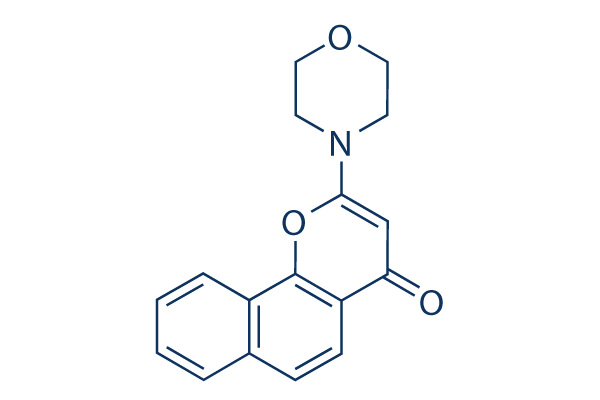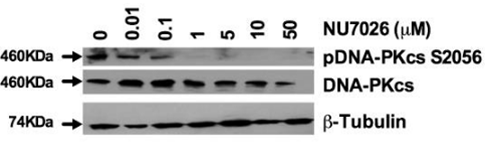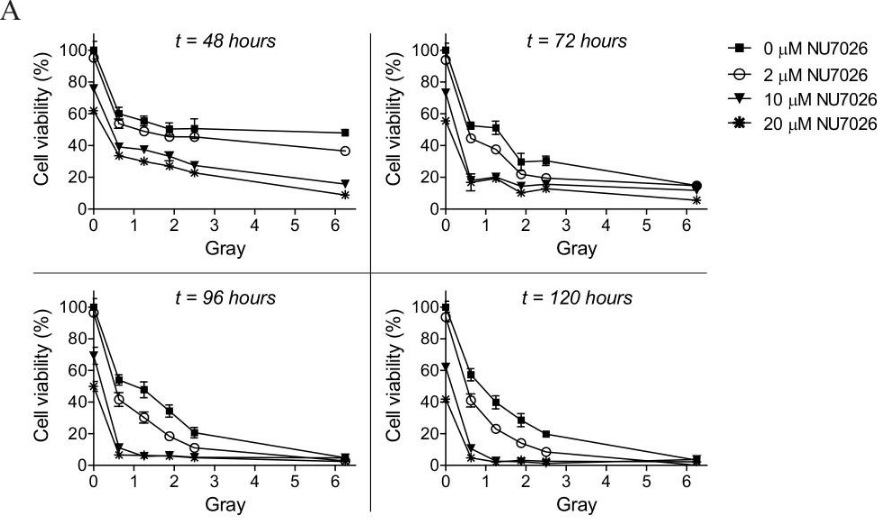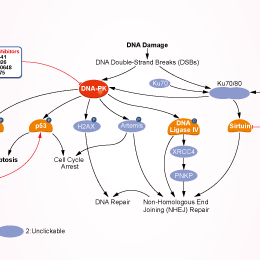
- Bioactive Compounds
- By Signaling Pathways
- PI3K/Akt/mTOR
- Epigenetics
- Methylation
- Immunology & Inflammation
- Protein Tyrosine Kinase
- Angiogenesis
- Apoptosis
- Autophagy
- ER stress & UPR
- JAK/STAT
- MAPK
- Cytoskeletal Signaling
- Cell Cycle
- TGF-beta/Smad
- DNA Damage/DNA Repair
- Compound Libraries
- Popular Compound Libraries
- Customize Library
- Clinical and FDA-approved Related
- Bioactive Compound Libraries
- Inhibitor Related
- Natural Product Related
- Metabolism Related
- Cell Death Related
- By Signaling Pathway
- By Disease
- Anti-infection and Antiviral Related
- Neuronal and Immunology Related
- Fragment and Covalent Related
- FDA-approved Drug Library
- FDA-approved & Passed Phase I Drug Library
- Preclinical/Clinical Compound Library
- Bioactive Compound Library-I
- Bioactive Compound Library-Ⅱ
- Kinase Inhibitor Library
- Express-Pick Library
- Natural Product Library
- Human Endogenous Metabolite Compound Library
- Alkaloid Compound LibraryNew
- Angiogenesis Related compound Library
- Anti-Aging Compound Library
- Anti-alzheimer Disease Compound Library
- Antibiotics compound Library
- Anti-cancer Compound Library
- Anti-cancer Compound Library-Ⅱ
- Anti-cancer Metabolism Compound Library
- Anti-Cardiovascular Disease Compound Library
- Anti-diabetic Compound Library
- Anti-infection Compound Library
- Antioxidant Compound Library
- Anti-parasitic Compound Library
- Antiviral Compound Library
- Apoptosis Compound Library
- Autophagy Compound Library
- Calcium Channel Blocker LibraryNew
- Cambridge Cancer Compound Library
- Carbohydrate Metabolism Compound LibraryNew
- Cell Cycle compound library
- CNS-Penetrant Compound Library
- Covalent Inhibitor Library
- Cytokine Inhibitor LibraryNew
- Cytoskeletal Signaling Pathway Compound Library
- DNA Damage/DNA Repair compound Library
- Drug-like Compound Library
- Endoplasmic Reticulum Stress Compound Library
- Epigenetics Compound Library
- Exosome Secretion Related Compound LibraryNew
- FDA-approved Anticancer Drug LibraryNew
- Ferroptosis Compound Library
- Flavonoid Compound Library
- Fragment Library
- Glutamine Metabolism Compound Library
- Glycolysis Compound Library
- GPCR Compound Library
- Gut Microbial Metabolite Library
- HIF-1 Signaling Pathway Compound Library
- Highly Selective Inhibitor Library
- Histone modification compound library
- HTS Library for Drug Discovery
- Human Hormone Related Compound LibraryNew
- Human Transcription Factor Compound LibraryNew
- Immunology/Inflammation Compound Library
- Inhibitor Library
- Ion Channel Ligand Library
- JAK/STAT compound library
- Lipid Metabolism Compound LibraryNew
- Macrocyclic Compound Library
- MAPK Inhibitor Library
- Medicine Food Homology Compound Library
- Metabolism Compound Library
- Methylation Compound Library
- Mouse Metabolite Compound LibraryNew
- Natural Organic Compound Library
- Neuronal Signaling Compound Library
- NF-κB Signaling Compound Library
- Nucleoside Analogue Library
- Obesity Compound Library
- Oxidative Stress Compound LibraryNew
- Plant Extract Library
- Phenotypic Screening Library
- PI3K/Akt Inhibitor Library
- Protease Inhibitor Library
- Protein-protein Interaction Inhibitor Library
- Pyroptosis Compound Library
- Small Molecule Immuno-Oncology Compound Library
- Mitochondria-Targeted Compound LibraryNew
- Stem Cell Differentiation Compound LibraryNew
- Stem Cell Signaling Compound Library
- Natural Phenol Compound LibraryNew
- Natural Terpenoid Compound LibraryNew
- TGF-beta/Smad compound library
- Traditional Chinese Medicine Library
- Tyrosine Kinase Inhibitor Library
- Ubiquitination Compound Library
-
Cherry Picking
You can personalize your library with chemicals from within Selleck's inventory. Build the right library for your research endeavors by choosing from compounds in all of our available libraries.
Please contact us at [email protected] to customize your library.
You could select:
- Antibodies
- Bioreagents
- qPCR
- 2x SYBR Green qPCR Master Mix
- 2x SYBR Green qPCR Master Mix(Low ROX)
- 2x SYBR Green qPCR Master Mix(High ROX)
- Protein Assay
- Protein A/G Magnetic Beads for IP
- Anti-Flag magnetic beads
- Anti-Flag Affinity Gel
- Anti-Myc magnetic beads
- Anti-HA magnetic beads
- Magnetic Separator
- Poly DYKDDDDK Tag Peptide lyophilized powder
- Protease Inhibitor Cocktail
- Protease Inhibitor Cocktail (EDTA-Free, 100X in DMSO)
- Phosphatase Inhibitor Cocktail (2 Tubes, 100X)
- Cell Biology
- Cell Counting Kit-8 (CCK-8)
- Animal Experiment
- Mouse Direct PCR Kit (For Genotyping)
- New Products
- Contact Us
NU7026
Synonyms: LY293646
NU7026 (LY293646) is a potent DNA-PK inhibitor with IC50 of 0.23 μM in cell-free assays, 60-fold selective for DNA-PK than PI3K and inactive against both ATM and ATR. NU7026 enhances G2/M cell arrest and apoptosis.

NU7026 Chemical Structure
CAS No. 154447-35-5
Purity & Quality Control
Batch:
Purity:
99.94%
99.94
NU7026 Related Products
| Related Products | NU7441 (KU-57788) AZD7648 CC-115 Nedisertib (M3814) KU-0060648 YU238259 LTURM34 | Click to Expand |
|---|---|---|
| Related Compound Libraries | FDA-approved Drug Library Natural Product Library Apoptosis Compound Library DNA Damage/DNA Repair compound Library Cell Cycle compound library | Click to Expand |
Signaling Pathway
Cell Data
| Cell Lines | Assay Type | Concentration | Incubation Time | Formulation | Activity Description | PMID |
|---|---|---|---|---|---|---|
| HeLa cells | Function assay | Inhibition of DNA dependent protein kinase isolated from HeLa cells, IC50=0.23 μM | 15658870 | |||
| HeLa cells | Function assay | Inhibition of mTOR protein isolated from HeLa cells, IC50=6.4 μM | 15658870 | |||
| HeLa | Function assay | In vitro inhibition of DNA-dependent protein kinase(DNA-PK) from HeLa (human carcinoma) cells, IC50=0.23μM | 12941339 | |||
| Click to View More Cell Line Experimental Data | ||||||
Biological Activity
| Description | NU7026 (LY293646) is a potent DNA-PK inhibitor with IC50 of 0.23 μM in cell-free assays, 60-fold selective for DNA-PK than PI3K and inactive against both ATM and ATR. NU7026 enhances G2/M cell arrest and apoptosis. | ||||
|---|---|---|---|---|---|
| Targets |
|
| In vitro | ||||
| In vitro | NU7026 potentiates ionizing radiation induced cytotoxicity in a concentration-dependent manner in V3YAC and PARP-1+/+ cells. NU7026 completely abolishes potentially lethal damage recovery in growth-arrested cells. NU7026 inhibits DNA DSB repair by 56% in the V3YAC cell line. [1] NU7026 (10 μM) potentiates the growth inhibitory effects of doxorubicin, mAMSA with PF50 values ranging from approximately 19 for mAMSA to approximately 2 in K562 cells. NU7026 (10 μM) also potentiates the growth inhibitory effect in this leukemia cell line with a PF50 value of 10.53. NU7026 (10 μM) enhances the -induced cell cycle G2 blockade in K562 cells. NU7026 potentiates topo II poisons involves inhibition of nonhomologous end joining and a G2/M checkpoint arrest. [2] NU7026 (10 μM) exposure of 4 h in combination with 3 Gy radiation is required for a significant radiosensitisation effect in CH1 human ovarian cancer cells. [3] NU7026 (< 10 μM) has synergistic cytotoxic activity at nontoxic doses of NU7026 in a CLL cell line (I83) and in primary CLL-lymphocytes. NU7026 (10 μM) increases -induced G(2)/M arrest in I83 cells. NU7026 (10 μM) enhances -induced γH2AX throughout the cell cycle in the I83 cell line. NU7026 (10 μM) Increases -Induced apoptosis in the I83 cell line. [4] NU7026 (55 μM) results in a dramatic induction of telomere fusion in p53 null MEFs and significantly fewer telomere fusions in p53 and ligase IV double null MEFs. [5] |
|||
|---|---|---|---|---|
| Kinase Assay | Recombinant kinase assay | |||
| Mammalian DNA-PK (500 ng/μL) is isolated from HeLa cell nuclear extract after chromatography using Q-Sepharose, S-Sepharose, and Heparin agarose. DNA-PK (250 ng) activity is measured at 30℃, in a final volume of 40 μL, in buffer containing 25 mM HEPES (pH 7.4), 12.5 mM MgCl2, 50 mM KCl, 1 mM DTT, 10% v/v Glycerol, 0.1% w/v NP-40, and 1 mg of the substrate GST-p53N66 in polypropylene 96-well plates. To the assay mix, varying concentrations of NU7026 (in DMSO at a final concentration of 1% v/v) are added. After 10 min of incubation, ATP is added to give a final concentration of 50 μM, along with a 30-mer double-stranded DNA oligonucleotide (final concentration of 0.5 ng/mL), to initiate the reaction. After 1 hour with shaking, 150 μL of PBS are added to the reaction, and 5 μL are then transferred to a 96-well opaque white plate containing 45 μl of PBS per well, where the GSTp53N66 substrate is allowed to bind to the wells for 1 hour. The IC50s for the compounds in all of the enzymes assays are derived from sigmoidal plots using the graphic package Prism, in which the enzyme activity in the varying concentration of compounds is plotted against the concentration of compound. | ||||
| Cell Research | Cell lines | A549 cells | ||
| Concentrations | 10 μM | |||
| Incubation Time | 3 h | |||
| Method | Cells were treated with indicated concentration of drug for 3 h. |
|||
| Experimental Result Images | Methods | Biomarkers | Images | PMID |
| Western blot | pDNA-PKcs S2056 / DNA-PKcs |

|
22131882 | |
| Growth inhibition assay | Cell viability |

|
26716839 | |
| In Vivo | ||
| In vivo | NU7026 (20mg/kg, i.v.) undergoes rapid plasma clearance (0.108/hour) in mice and this is largely attributed to extensive metabolism. Bioavailability following interperitoneal (i.p.) and p.o. administration of NU7026 at dose of 20 mg/kg is 20 and 15%, respectively. [3] |
|
|---|---|---|
| Animal Research | Animal Models | Female BALB/c mice |
| Dosages | 25 mg/kg | |
| Administration | intraperitoneal injection or orally | |
Chemical Information & Solubility
| Molecular Weight | 281.31 | Formula | C17H15NO3 |
| CAS No. | 154447-35-5 | SDF | Download NU7026 SDF |
| Smiles | C1COCCN1C2=CC(=O)C3=C(O2)C4=CC=CC=C4C=C3 | ||
| Storage (From the date of receipt) | |||
|
In vitro |
4-Methylpyridine : 5 mg/mL DMSO : 1 mg/mL ( (3.55 mM) Moisture-absorbing DMSO reduces solubility. Please use fresh DMSO.) Water : Insoluble |
Molecular Weight Calculator |
|
In vivo Add solvents to the product individually and in order. |
In vivo Formulation Calculator |
||||
Preparing Stock Solutions
Molarity Calculator
In vivo Formulation Calculator (Clear solution)
Step 1: Enter information below (Recommended: An additional animal making an allowance for loss during the experiment)
mg/kg
g
μL
Step 2: Enter the in vivo formulation (This is only the calculator, not formulation. Please contact us first if there is no in vivo formulation at the solubility Section.)
% DMSO
%
% Tween 80
% ddH2O
%DMSO
%
Calculation results:
Working concentration: mg/ml;
Method for preparing DMSO master liquid: mg drug pre-dissolved in μL DMSO ( Master liquid concentration mg/mL, Please contact us first if the concentration exceeds the DMSO solubility of the batch of drug. )
Method for preparing in vivo formulation: Take μL DMSO master liquid, next addμL PEG300, mix and clarify, next addμL Tween 80, mix and clarify, next add μL ddH2O, mix and clarify.
Method for preparing in vivo formulation: Take μL DMSO master liquid, next add μL Corn oil, mix and clarify.
Note: 1. Please make sure the liquid is clear before adding the next solvent.
2. Be sure to add the solvent(s) in order. You must ensure that the solution obtained, in the previous addition, is a clear solution before proceeding to add the next solvent. Physical methods such
as vortex, ultrasound or hot water bath can be used to aid dissolving.
Tech Support
Answers to questions you may have can be found in the inhibitor handling instructions. Topics include how to prepare stock solutions, how to store inhibitors, and issues that need special attention for cell-based assays and animal experiments.
Tel: +1-832-582-8158 Ext:3
If you have any other enquiries, please leave a message.
* Indicates a Required Field
Tags: buy NU7026 | NU7026 supplier | purchase NU7026 | NU7026 cost | NU7026 manufacturer | order NU7026 | NU7026 distributor







































